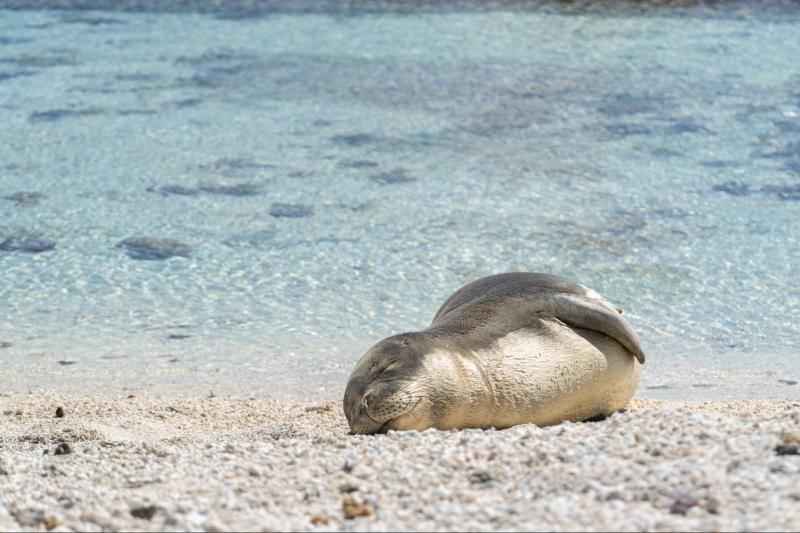
Hawaiian monk seal population surpasses 1,500
by NOAA Fisheries 14 May 2022 21:17 UTC

A juvenile Hawaiian monk seal rests on the beach © NOAA Fisheries (NMFS Permit #22677; PMNM Permit #2021-015)
The Hawaiian monk seal is one of the world's most endangered seal species. For almost 40 years, NOAA has monitored the seal's population trend, researched threats, and taken many actions to save seals.
Hawaiian monk seals are also one of NOAA's nine Species in the Spotlight. After decades of declining numbers in the Northwestern Hawaiian Islands, the total population of monk seals began to increase gradually in 2013 in both the Northwestern and main Hawaiian Islands. This is evidence of the species' resilience and the payoff of diligent conservation work. This year the population surpassed 1,500 for the first time in more than 20 years!
Research and recovery challenges
Due to the Covid pandemic, NOAA canceled monk seal and other research surveys in 2020. This marked an unprecedented break in long-term monitoring in the Northwestern Hawaiian Islands where most of the monk seals live. NOAA's monk seal scientists are accustomed to having their finger on the pulse of their favorite endangered species, so they were distressed to lose touch with most of the population for almost 2 years. This was especially true because, despite encouraging overall trends, there were also causes for concern when our field teams last visited the Northwestern Hawaiian Islands in 2019.
For example, the recent loss of crucial island habitat at Lalo (French Frigate Shoals) and poor survival of pups at some other sites are reminders of how fragile the species' recovery is. In the summer of 2021, our field teams returned with much enthusiasm to the Northwestern Hawaiian Islands. They spent about a month and a half checking up on the monk seal population and conducting life-saving interventions.
A good outlook for the population
Following the return of field teams to Honolulu last autumn, population analysis began. Now the numbers are in, and the news is good! We estimate that the total number of monk seals throughout their entire range was 1,570 in 2021. That is a respectable increase since the most recent estimate of 1,435 in 2019. It marks the first time the population has exceeded 1,500 seals in more than 2 decades.
This positive trend was also widespread—the estimates at six of the eight subpopulations in the Northwestern Hawaiian Islands increased to some degree. The remaining two stayed almost exactly the same from 2019 to 2021. Also, despite intentional and accidental human-caused deaths of several seals in 2021, the population in the main Hawaiian Islands still continued to grow.
Species long-term recovery
From 2013 to 2021, the monk seal population grew at an average rate of 2 percent per year, providing hope for the species' long-term recovery. Even so, the level required for the species to be down-listed from endangered to threatened under the Endangered Species Act is more than double the current number of monk seals.
We are also paying attention to some concerning trends. The survival of pups during their first year of life, for example, is often a leading indicator of population trends. Some Northwestern Hawaiian Islands subpopulations have shown low pup survival for a year or more. Also, the loss of island habitat at Lalo due to climate change heightens concerns about the long-term viability of the mostly low-lying islands that monk seals inhabit throughout most of the Northwestern Hawaiian Islands. Our monk seal field teams are on their way back to the Northwestern Hawaiian Islands for the 2022 field season with renewed ambition to learn more and actively engage in life-saving interventions.